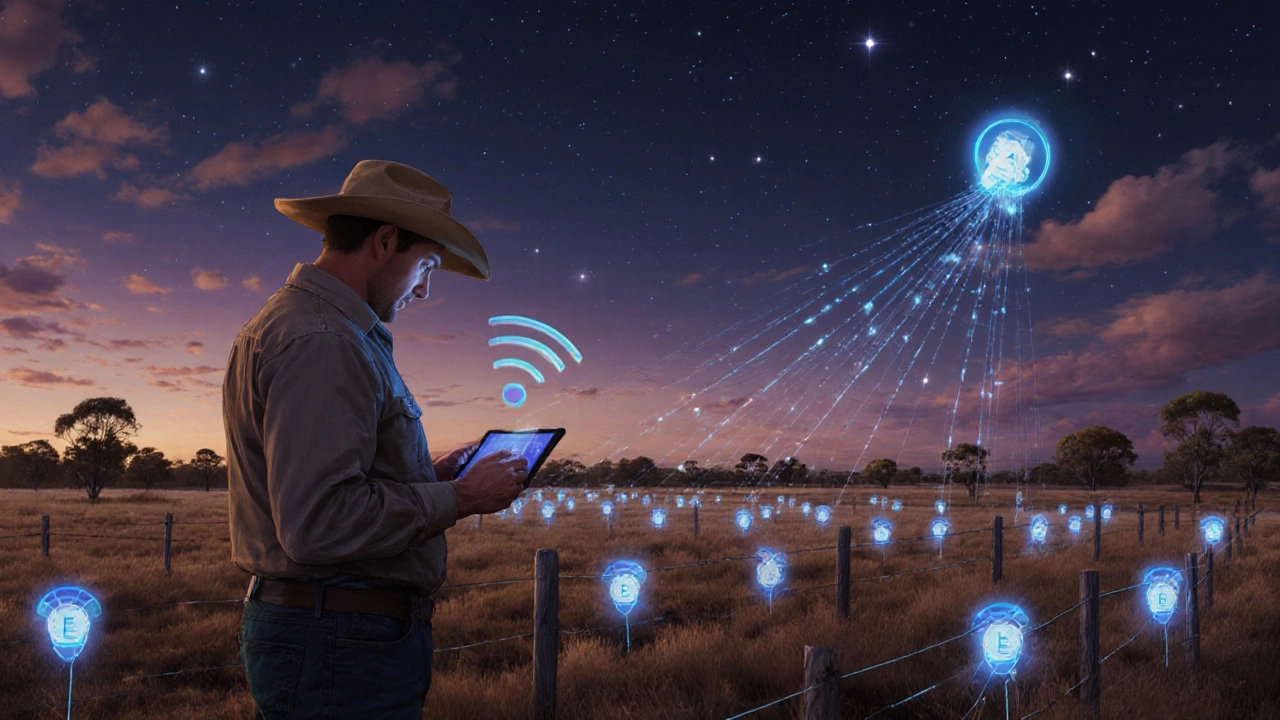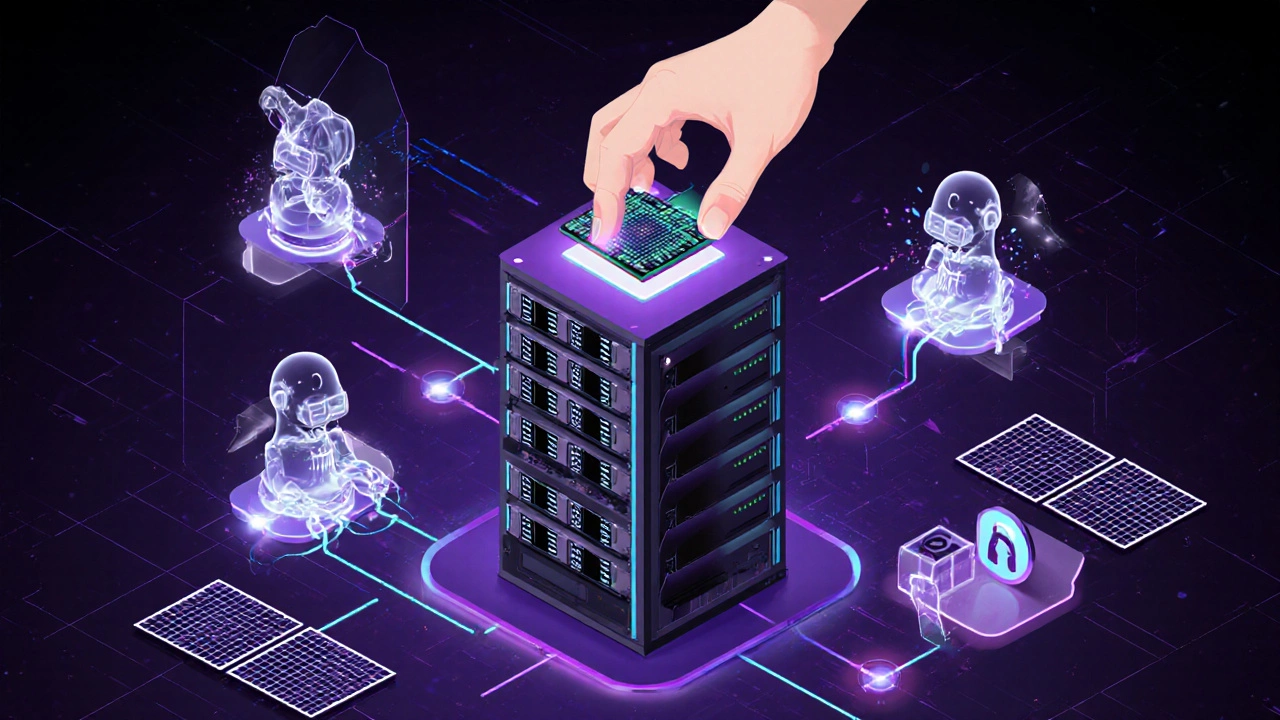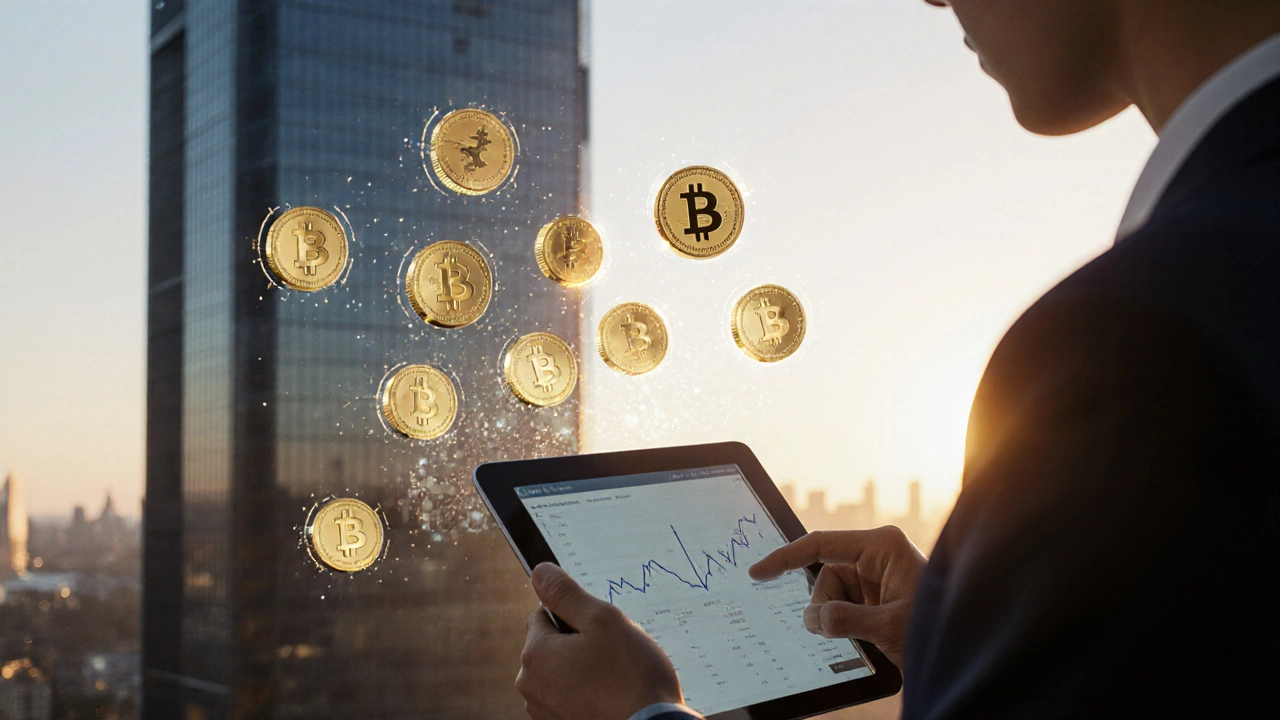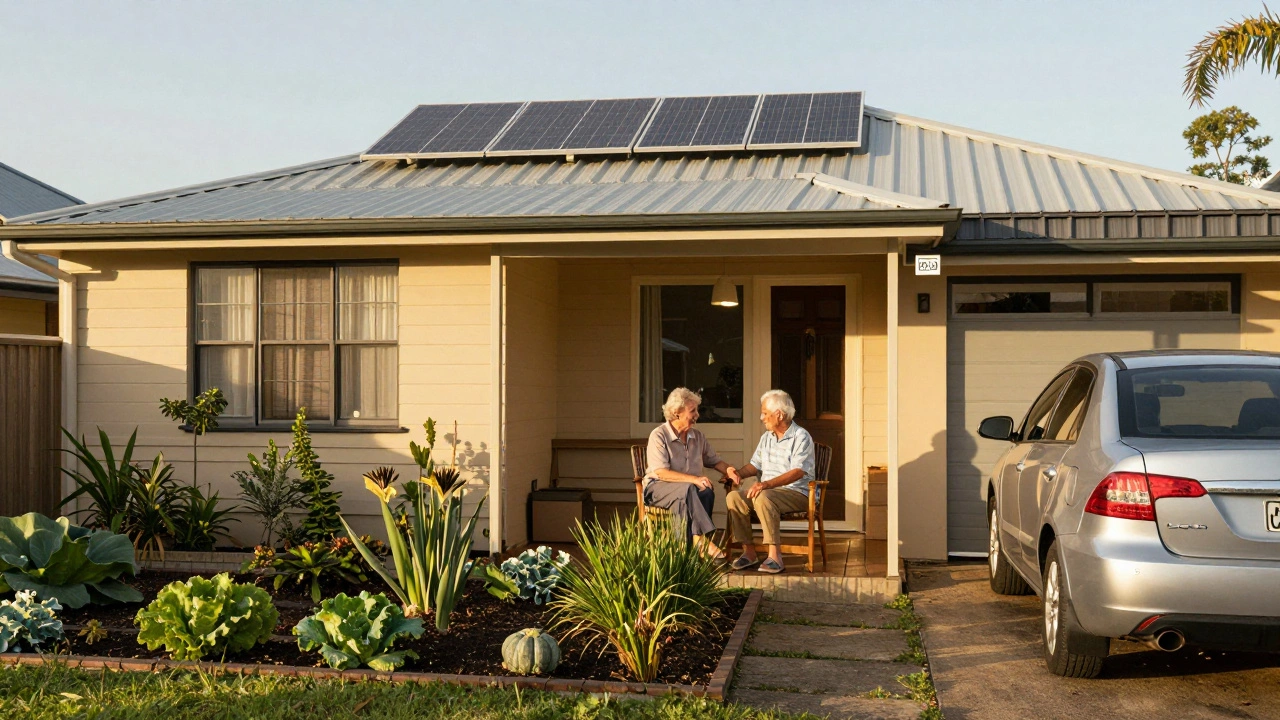Real-World Asset Tokenization Calculator
Estimated Value by 2025
Based on World Economic Forum projections: $12B tokenized assets in 2024 growing to $25B in 2025
Everyone’s asking: what is the next big thing to invest in? If you’ve been watching crypto for years, you know the answer isn’t Bitcoin again. It’s not Ethereum either - not this cycle. The real opportunities are hiding in plain sight, buried under noise, hype, and overpriced memecoins. The next big thing isn’t about being first. It’s about being early to something that actually solves a real problem.
Real-World Asset Tokenization Is Already Here
Think of tokenization like turning physical assets - real estate, fine art, commodities - into digital shares you can buy and trade on a blockchain. It’s not science fiction. In 2024, over $12 billion in real-world assets were tokenized globally, according to the World Economic Forum. By 2025, that number is expected to hit $25 billion.
Projects like Ondo Finance and Maple Finance are already letting investors buy fractions of U.S. Treasury bonds or commercial office buildings through crypto wallets. In Australia, the Australian Securities Exchange (ASX) has been testing tokenized bonds since 2023. You don’t need to be an institutional investor anymore. With as little as $50, you can own a sliver of a Sydney office tower or a portfolio of government debt.
This isn’t speculation. It’s efficiency. Traditional real estate transactions take weeks. Tokenized assets settle in minutes. Liquidity that was locked up for decades is now accessible. And because these tokens are built on regulated blockchains, they’re auditable, transparent, and far less prone to fraud.
Decentralized Physical Infrastructure Networks (DePIN)
DePIN is the quiet revolution nobody’s talking about - but everyone’s using. It’s when people contribute real-world hardware - like Wi-Fi hotspots, solar panels, or cell towers - and get paid in crypto for doing it.
Take Helium. Back in 2021, it was a meme coin. Today, it’s a global network of over 1.2 million hotspots providing decentralized wireless coverage. People install these devices at home, and in return, they earn HNT tokens. In rural Queensland, farmers are using Helium to track livestock with low-power sensors. In Brisbane suburbs, homeowners are earning $20-$50 a month just by leaving a hotspot on.
Other DePIN projects are doing the same with data storage (Filecoin), mapping (Hivemapper), and even clean energy (Power Ledger). The common thread? Real utility. Real hardware. Real rewards. These aren’t apps you download. They’re infrastructure you participate in.
AI + Blockchain: The Hybrid Powerhouse
AI is hot. Blockchain is stable. Put them together, and you get something powerful: AI agents that can execute smart contracts, verify data, and manage digital identities without human intervention.
Projects like Fetch.ai and SingularityNET are building decentralized AI marketplaces. Imagine an AI agent that automatically buys energy when prices drop, pays for it in crypto, and sells excess solar power back to your neighbor - all without you lifting a finger. That’s already live in pilot programs across Germany and Singapore.
In Australia, startups like Aethir are using blockchain to distribute GPU power for AI training. Instead of relying on Amazon or Google’s data centers, users rent out idle graphics cards from their PCs. The result? Cheaper AI for developers, passive income for everyday users.
This isn’t theoretical. It’s happening now. And the winners won’t be the biggest names. They’ll be the ones solving actual bottlenecks in how AI gets trained and paid for.

Privacy Coins Are Making a Comeback
Privacy used to be a dirty word in crypto. After the U.S. crackdown on Monero and Zcash in 2022, many exchanges delisted them. But now, governments are pushing for full financial surveillance. In Australia, the ATO has started requiring crypto exchanges to report all transactions over $10,000. That’s making privacy coins relevant again.
Monero (XMR) still leads. It’s the only major coin that hides sender, receiver, and amount by default. No one can trace it. Zcash (ZEC) offers optional privacy, but most users don’t enable it. Then there’s Secret Network - a newer chain that lets developers build fully private dApps. You can trade, lend, or stake without anyone seeing your balance.
Privacy isn’t about hiding illegal activity. It’s about protecting your financial autonomy. If you’re earning crypto from freelance work, DePIN, or staking, you have a right to control who sees your financial history. The next big wave of crypto users won’t want to be tracked. They’ll demand privacy - and they’ll vote with their wallets.
Layer 2 Solutions Are the Unsung Heroes
You’ve heard of Ethereum. But most people don’t realize that over 80% of Ethereum activity now happens on Layer 2 networks like Arbitrum, Optimism, and Base. These are secondary chains that handle transactions faster and cheaper than the main Ethereum network.
Why does this matter? Because if you’re investing in crypto, you’re not just betting on Ethereum. You’re betting on its ecosystem. Arbitrum alone has over $8 billion locked in DeFi protocols. Optimism powers major NFT marketplaces and gaming apps. Base, backed by Coinbase, has become the go-to for retail users.
The real play here? Invest in the Layer 2 tokens themselves. ARB, OP, and BASE aren’t just governance tokens. They’re the backbone of the next generation of crypto apps. If Ethereum is the highway, Layer 2s are the off-ramps where all the traffic flows. And they’re growing 3x faster than the main chain.

What to Avoid
Not every new coin is a hidden gem. Stay away from:
- Memecoins with no utility - Dogecoin, Shiba Inu, or anything named after a meme
- Projects that promise 1000% returns in 30 days - they’re pump-and-dumps
- Coins with anonymous teams - if you can’t find who’s building it, don’t trust it
- Token launches with no clear roadmap or audit - check CoinGecko or CoinMarketCap for verified projects
Remember: the next big thing isn’t flashy. It doesn’t have a celebrity endorsement. It doesn’t trend on Twitter. It solves a real problem. It’s quiet. It’s technical. And it’s already being used by thousands of real people.
Where to Start
If you’re new to crypto and want to get involved in these trends:
- Start with a regulated exchange like CoinSpot or Independent Reserve - both are Australian-based and compliant with ATO rules
- Buy small amounts of Ondo Finance (ONDO), Fetch.ai (FET), or Monero (XMR) - they’re all listed on major Aussie platforms
- Use a hardware wallet like Ledger or Trezor to store your assets - never leave crypto on an exchange long-term
- Track your taxes - the ATO requires you to report every crypto transaction, even small ones
You don’t need to chase the next moonshot. You just need to find the next quiet winner.
Is now a good time to invest in cryptocurrency?
Yes - but only if you’re investing in projects with real utility, not hype. Crypto markets are recovering from the 2022 crash, and institutional money is flowing back in. Real-world asset tokenization, DePIN, and Layer 2 networks are seeing steady growth. The key is to avoid speculative coins and focus on infrastructure that’s already being used.
What’s the safest crypto to invest in right now?
There’s no such thing as a completely safe crypto, but the most secure bets are established protocols with transparent teams and real usage. Ethereum, Bitcoin, and regulated Layer 2 tokens like Arbitrum (ARB) and Optimism (OP) have proven track records. Privacy coins like Monero (XMR) are also solid if you value anonymity. Avoid new tokens with no audits or anonymous developers.
How much should I invest in crypto for the first time?
Start with what you can afford to lose - no more than 5% of your total investment portfolio. Crypto is volatile. Even the best projects can drop 30% in a week. Use dollar-cost averaging: invest $50-$100 every month instead of buying all at once. This reduces risk and helps you stay calm during market swings.
Can I invest in crypto in Australia legally?
Yes. Australia has clear crypto regulations. The ATO treats crypto as property, not currency. You must report all transactions - buys, sells, trades, and staking rewards - on your tax return. Use exchanges like CoinSpot, Independent Reserve, or Binance Australia that are registered with AUSTRAC. Avoid unregulated offshore platforms.
Do I need a wallet to invest in crypto?
You don’t need one to buy crypto on an exchange, but you should get one to store it safely. Exchanges can be hacked or freeze your funds. A hardware wallet like Ledger Nano X or Trezor Model T gives you full control. It’s like a USB drive that holds your crypto offline. For beginners, start with a software wallet like Phantom or Trust Wallet - just never leave large amounts on an exchange.
Final Thought
The next big thing in crypto isn’t a coin that’ll make you rich overnight. It’s a system that makes financial access fairer, faster, and more private. It’s not about betting on hype. It’s about building something that lasts. If you’re looking for the next big investment, look where the real work is being done - not where the influencers are posting.






